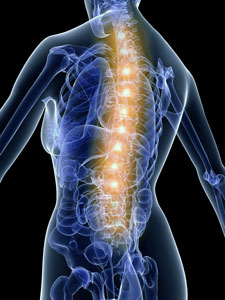 The location in your spine where dysfunction occurs is called a spinal fixation. Your Chiropractor is able to find these areas using palpation. They show up as areas of increased tenderness and increased stiffness (decreased motion).
The location in your spine where dysfunction occurs is called a spinal fixation. Your Chiropractor is able to find these areas using palpation. They show up as areas of increased tenderness and increased stiffness (decreased motion).
These fixations have many components, the first of which is called kinesiopathology. This means the joint has abnormal motion. If you consider your thumb, it is able to bend. If it was unable to flex as far this would be kinesiopathology. A similar thing occurs in the joints of the spine, they are not able to bend back and forth as much as they should.
The second component is called neuropathophyiology which means that the nerves in the area Are affected. When these nerves are affected it can cause the muscles in the area to contract to protect the joint, and he nerves cause you to feel pain especially when you do an activity that causes your spine to have to move.
The third component is myopathology which means that the muscles are not working correctly. These muscles in the area surrounding the joint with the fixation tend to be tighter and occasionally can go into spasm. This explains why your spine has a decreased range of motion (you cannot bend as far as normal)
The forth component is histopathology, which means there is a change to the cells and tissues in the area. Generally this means selling and inflammation. It can normally be alleviated by using cold such as ice packs to decrease the inflammation.
As you can see the dysfunction that occurs in the joint is very complex and has many parts.
Many of the facets of the problem can be helped directly or indirectly by Chiropractic adjustments on the involved fixation.
